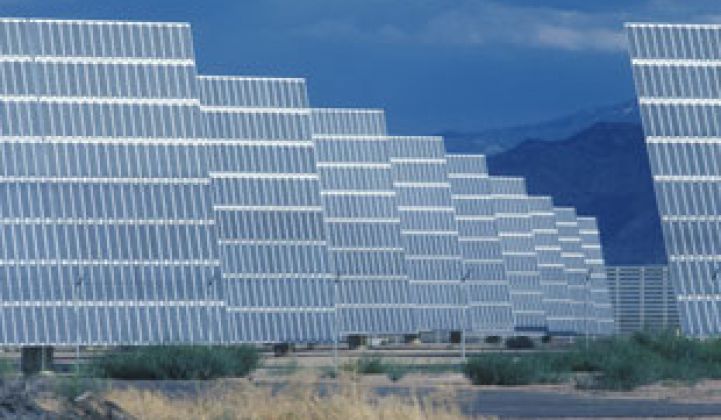The National Renewable Energy Laboratory laid off 15 people on Monday, about 10 percent of its solar research workforce.
In a memo sent to the organization on Monday, NREL said it is also seeking voluntary separation for about 50 additional support staff. The total staff reductions are expected to affect about 70 employees, just less than 4 percent of NREL’s staff.
Most of the layoffs were researchers involved in long-term programs and next-generation PV technologies. “Painfully and unfortunately, NREL decided these programs are underfunded and we can’t keep these on,” said George Douglas, NREL’s public affairs manager.
For the past four years, NREL has been using carryover funds and other means to keep the programs afloat, said Douglas. Some researchers were shifted to other programs where their skills were a good fit. “This is the year where it became very difficult to impossible to keep these programs alive,” he added.
Since fiscal year 2012, the U.S. Department of Energy’s solar funding has dropped nearly 20 percent to $233 million. The funding for NREL’s advanced, next-generation solar PV technologies has flatlined for those four years.
Despite the recent public lip service to clean energy and efficiency in the context of climate change, those sectors make up a small portion of DOE’s funding both historically and in recent years.

As John Doerr of Kleiner Perkins has pointed out for years, Americans spend more on potato chips than they do on clean energy funding. And yet, Citi has just estimated that a global clean energy economy could save $1.8 trillion by 2040.
Douglas said the cuts that came were to programs that did not have short-term research that impacted the SunShot Initiative, which seeks to bring the levelized cost of large-scale solar to $0.06 per kilowatt-hour by the end of the decade. The initiative has invested about $250 million annually since 2011 and much of the funds have gone to tackle the soft costs of solar.
The focus on SunShot has put the funding for some other long-term solar research on the back burner. If and when the government decides to continue pushing the envelope on PV research, the cost of rebuilding teams with this expertise could be difficult to handle. “There are people with a lot of experience capability that’s hard to build up once it goes away,” admitted Douglas.
Not all of the forward-looking research has been halted, he added. Some of it will be ongoing as part of the broad effort of NREL’s National Center for Photovoltaics, where many researchers are working on multiple projects.
Within SunShot, there is still some money for advanced PV research. In September, $20 million of $100 million in funding announced was set aside for projects that would “advance the limits of photovoltaic cell and module performance” beyond the SunShot 2020 goals.
Solar PV is not the only research that has seen flatlined budgets that force staff to do more with less. Buildings research has also seen some hard cuts, said Douglas. But other departments in NREL are growing, such as energy integration, which has been able to absorb some researchers from other projects.
As the U.S. investment in clean energy has stagnated, China is growing its investment. China first overtook the U.S. in 2012 and has been increasing the gap ever since, with $89 billion in clean energy investment in 2014 compared to $52 billion in the U.S.



